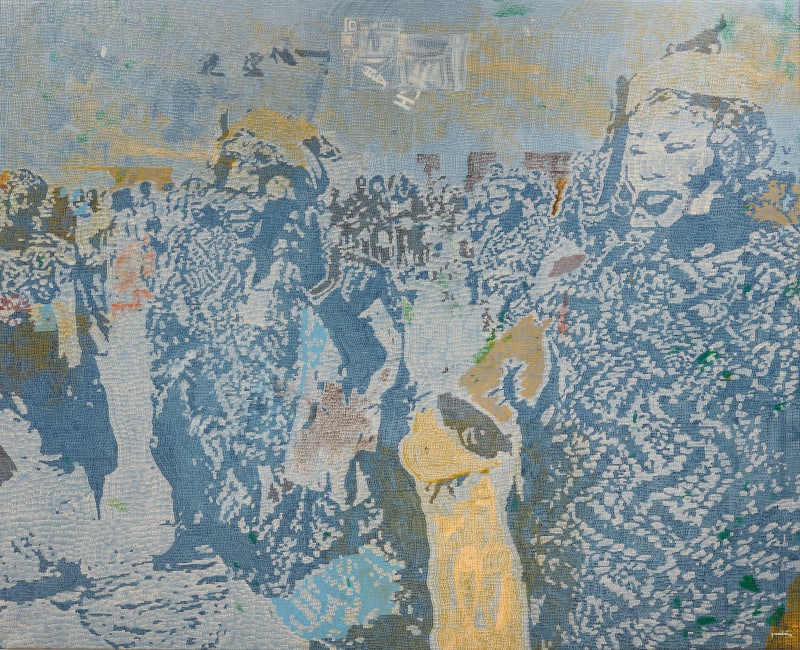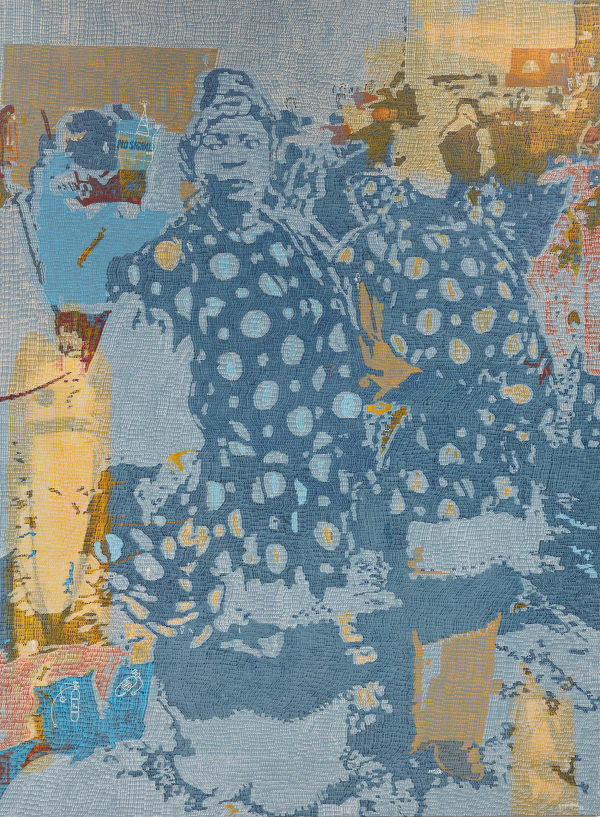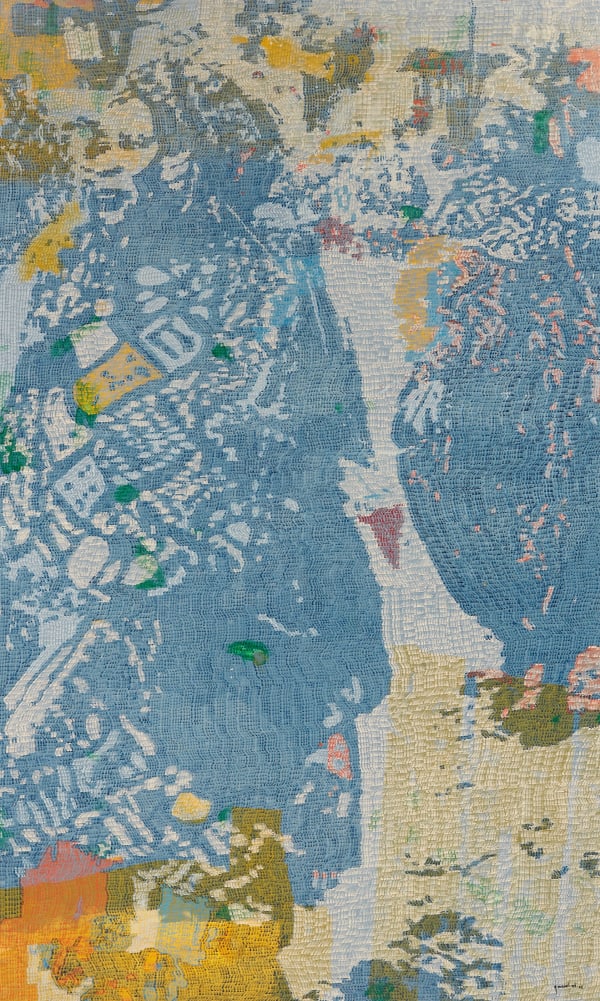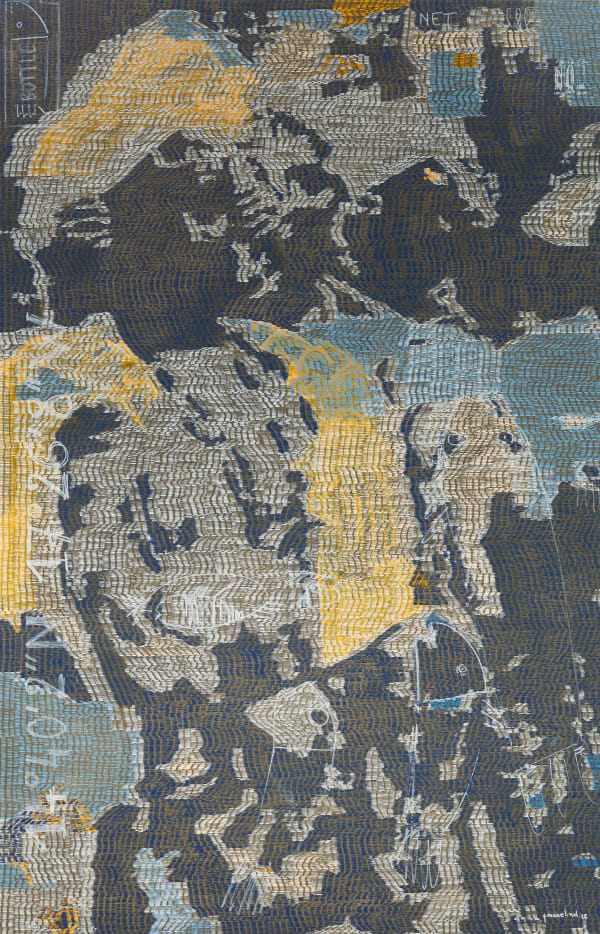Manel Ndoye: Formes Synchronisees
Past exhibition
Overview
Press preview: Thursday 4 May, 1 - 3 pm.
Jack Bell Gallery is pleased to present an exhibition of paintings by Manel Ndoye. This will be the artist’s first solo show with the gallery.
I began this collection of pieces with a question: could lines alone come together to form figures?
Now, I understand my work as poetry in prose because the lines of verse are organized in all directions – an acrylic concrete poem.
The contrast between stroke and background, white and grey, is the works’ most basic linguistic element; the lines’ alternation and repetition is the works’ rhyme scheme. The breaks between lines juxtapose the fullness of the stroke and the emptiness of the background. Taken together, where we perceive the grey around and through the volume of white and blue, the lines’ enjambment creates transparency. But the pieces are full of figurative contrasts, too. When the Lébou dancers fold the sleeves of their boubous or lift their skirt to take a step, they reveal the layers of clothing underneath. This, too, is a system of contrasts, revelations, repetitions, joinings and breaks – that is to say, a language, one syncopated with the steps of the dance. Moved by the dancers’ attention to intricate detail, I wanted to preserve the vocabulary of their wardrobe for future generations. Additionally, the striking poise of the dancers spurred me to capture their determination; I sought to create a visual language that translated the Ndawrabine dance into my paintings, drawing on the fundamental elements of rhythm and contrast.
Schools of fish were the original inspiration for my linework. In their schools, fish swim in synchronized lines, yet their movements through the water, as they divide and come together, take on the unrestricted nature of a dance. The lines of fish form another set of oxymorons: fluid disjuncture, ordered play, harmonized disorganization, a community of individuals. I wanted to know if, by using their lines in my work, I, too, could create a greater figure out of the miniscule elements. So I mimicked their form on three axes. First, I copied the way fish follow each other through the water with my horizontal line work. Then, to this horizontal fluidity, I added vertical compartmentalization, so that each set of horizontal lines ends in line – this line-ending synchronization is the piece’s rhyme scheme. Lastly, I pivoted some of the vertical compartments to fit along a diagonal – this is the painting’s oblique rhyme, its syncopation.
In the end, my work is about the coming together of disparate pieces, about interrogating the meetings between them. What is the syntax of the spots on a woman’s sleeve, or of the forms which make up each spot? Just as lines of poetry are formed from words, and words from letters, and letters themselves from lines of ink, my paintings invite the viewer to play with scale. The paintings’ subjects are easiest to see at a distance; come too close, and you’ll start to make out something else. Step away from the painting to make out its compositions’ subjects; step closer to make out the fragments that compose it. My intention is to encourage the viewer to work as their own interpreter as they travel between the aspects of my work.
- Manel Ndoye
Ndoye was born 1986 in Diender, Senegal.
Works
Installation Views


















